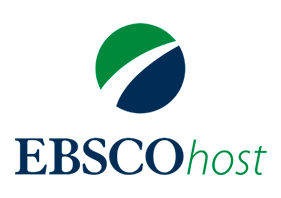Methodology to identify the marketing strategies that affect the purchasing moment: TRAPPOLA
DOI:
https://doi.org/10.33304/revinv.v16n1-2021004Keywords:
Active learning, market economy, alternative education, marketingAbstract
The increasing globalization, consumerism, and rivalry between companies have influenced over time the generation of marketing strategies to prevail through the analysis of human behavior. Therefore, based on a literature review of these aspects, a constructivist methodology was designed called “Trappola”, which allows participants to experience the principle of behavioral economics through a consumption situation focused on marketing strategies, which is based on the idea that people are not completely rational, but also predictably irrational. That is to say, that their irrationality always occurs in the same way over and over again. Therefore, the learning objective revolves around recognizing methods such as the decoy effect, anchoring effect, arbitrary coherence, gregariousness or dragging effect, zero cost effect, emotional marketing, and the effect of expectation or Pygmalion effect. Finally, it is concluded that human behavior, being predictable, allows marketing strategies to be largely complied with at the moment of making a purchase.Downloads
References
Akdoğan, M. Ş. y Altuntaş, B. (2015). Covert Marketing Strategy and Techniques. Procedia-Social and Behavioral Sciences, 207, 135-148.
American Marketing Association. (2017). Definitions of Marketing. https://www.ama.org/the-definition-of-marketing-what-is-marketing/
Anderson, C. (2007). La economía Long Tail: De los mercados de masas al triunfo de lo minoritario. Editores Urano S.A.
Ariely, D. (2008). Las trampas del deseo. Ariel.
Ariffin, M. M., Oxley, A. y Sulaiman, S. (2014). Evaluating Game-Based Learning Effectiveness in Higher Education. Procedia-Social and Behavioral Sciences, 123, 20-27. https://doi.org/10.1016/j.sbspro.2014.01.1393
Cialdini, R. (1990). Influencia ciencia y práctica. Cuáles son los factores determinantes para que una persona diga sí a otra persona (2.a ed.). Edición Book.
Godin, S. (2002). La vaca purpura: Diferénciate para transformar tu negocio. Gestión 2020.
González-Tejero, J. M. y Pons, R. M. (2011). El constructivismo hoy: Enfoques constructivistas en educación. Revista Electrónica de Investigación Educativa, 13(1), 1-27.
Kotler, P. y Keller, K. (2006). Dirección de marketing (12.a ed.). Pearson educación. https://frrq.cvg.utn.edu.ar/pluginfile.php/14585/mod_resource/content/1/librodireccion-de-marketing%28kotler-keller_2006%29.pdf
Krishna, A. (2012). An Integrative Review of Sensory Marketing: Engaging the Senses to Affect Perception, Judgment and Behavior. Journal of Consumer Psychology, 22(3), 332-351.
Krishna, A. y Schwarz, N. (2014). Sensory Marketing, Embodiment, and Grounded Cognition: A Review and Introduction. Journal of Consumer Psychology, 24(2), 159-168. https://doi.org/10.1016/j.jcps.2013.12.006
Piaget, J. (1972). The Psychology ofthe Child. Basic Books.
Prince, M. J. y Felder, R. M. (2006). Inductive Teaching and Learning Methods: Definitions, Comparisons, and Research Bases. Journal of Engineering Education, 95(2), 123-138. https://doi.org/10.1002/j.2168-9830.2006.tb00884.x
Ries, A. y Trout, J. (1999). 22 leyes inmutables del marketing. McGraw Hill.
Roy, A. y Chattopadhyay, S. P. (2010). Stealth Marketing as a Strategy. Business Horizons, 53(1), 69-79. https://doi.org/10.1016/j.bushor.2009.09.004
Salinas, P. (2012). Metodología de la investigación científica. Universidad de Los Andes. https://n9.cl/7nk3












